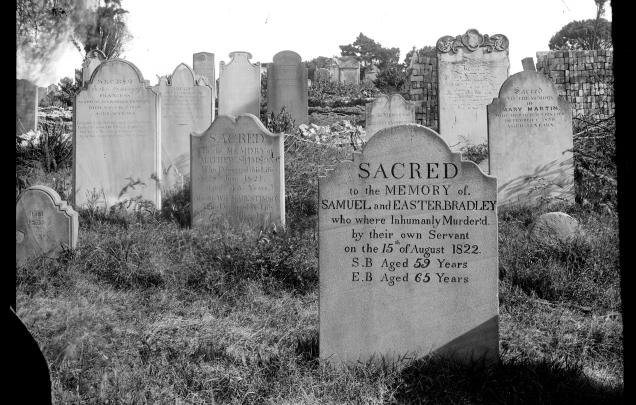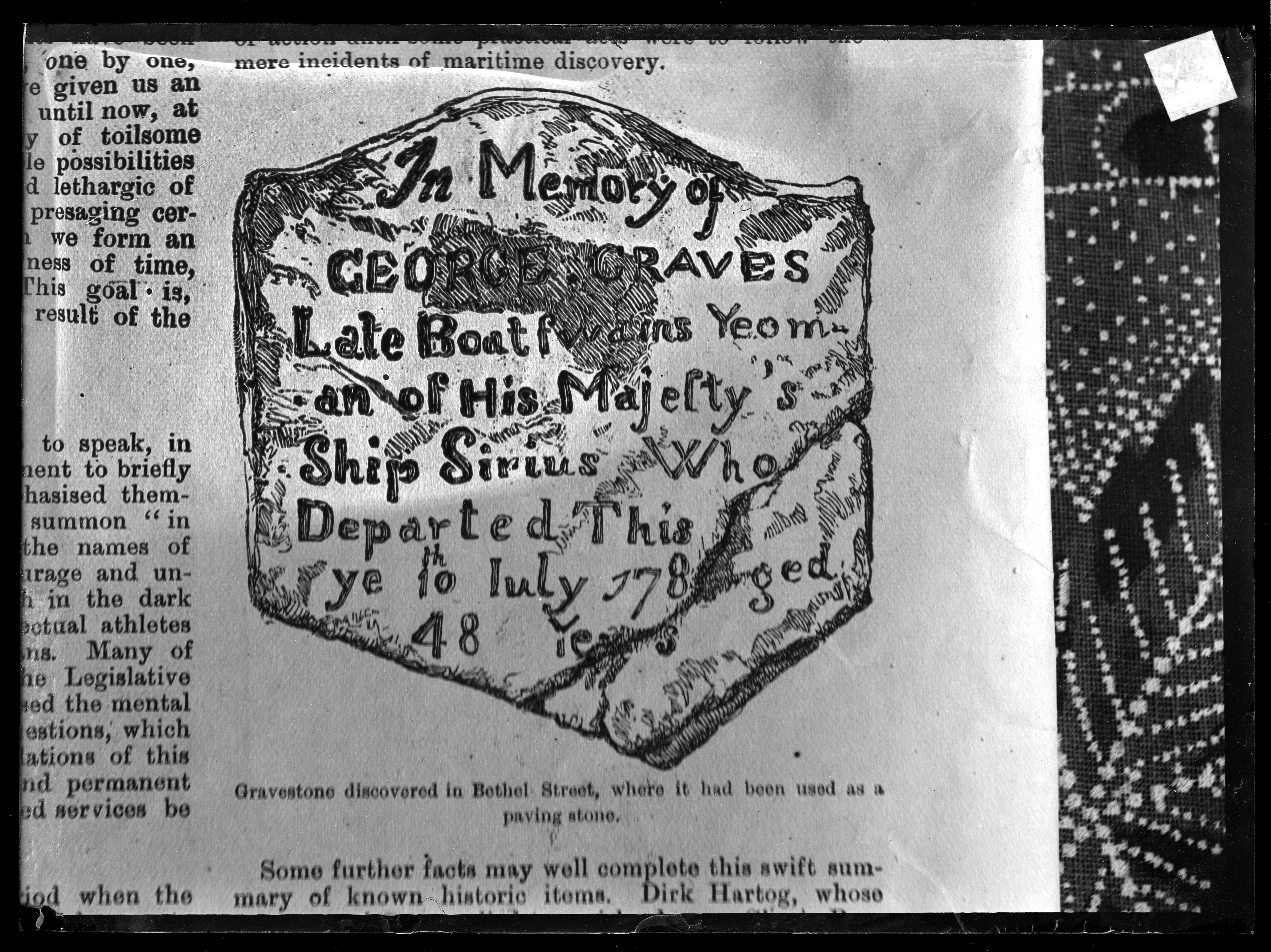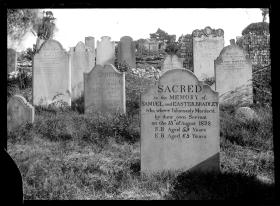Headstones as historical sources
This is the student activity 1 of 2 of the Cemetery site study learning activity.

Who were they?
Headstones can provide information about a person’s life. When the Devonshire Street Cemetery was to be removed to make way for Central Station, Arthur and Josephine Ethel Foster thought it was important to record information about the cemetery and the people who were laid to rest there. They took photographs of the headstones and they also recorded the inscriptions by hand, one by one into a record book. Here are some of the inscriptions that the Fosters recorded in the two years they spent on their project.
Josephine said: ‘We all realise how rapidly the old is giving place to the new, and only by means of pictures will those who come after us know what Sydney was like once upon a time. And in looking at pictures of quiet streets, quaint old homes, beautiful gardens and fine old trees, they will understand why many today still call this queenly city “Dear old Sydney”’.
|
Joseph Charles Tremayne Only son of Joseph Hyde Potts Of the Bank of N.S. Wales Who resigned his spirit On the 9th day of November 1838 |
Sacred to the memory of Mary Curran who was found Drowned August 1st 1821 Aged 46 Years The Mother of Storers children |
Sacred to the memory of William Oliver who was accidentally killed by a Bullock Cart April the 2d. 1821 Aged 34 years |
|
Catherine Jane, who departed this life
|
Sacred to the memory of Samuel and Easter [Esther] Bradley who where Inhumanly Murder’d by their own Servant on the 15th of August 1822 S.B. Aged 59 Years E.B Aged 65 Years
|
Imagine you are either Arthur or Josephine Foster and you are visiting the Devonshire Street Cemetery, taking photographs and recording inscriptions.
Compose a script of the conversation they might have had about the inscriptions they read, recorded and photographed. Use the samples above in your script and include what the Fosters learnt about life in the early days of the colony. In this script, you might include their reasons for dedicating so much of their spare time to making these records.
Looking after the past for the future

Look at Source 1. This is a very old headstone belonging to George Graves who came to NSW with the First Fleet in 1788. George Graves was a free sailor on the First Fleet ship, Sirius. He died when he was 48 years old, but we do not know how he died.
Unfortunately, people in the past were not always as careful about preserving headstones as we are today. George Graves’ headstone was discovered because it had been used as part of a footpath in The Rocks, Sydney.
Discuss:
- Do you think it was right or wrong to use George’s headstone as part of the footpath? Give reasons to support your opinion.
- Imagine that you find out in the news that your old local cemetery is going to be destroyed. All the graves will be dug up and the land will be used for shops and houses. Write a letter to your local council about the importance of the cemetery to your community and why it is necessary to preserve it.
